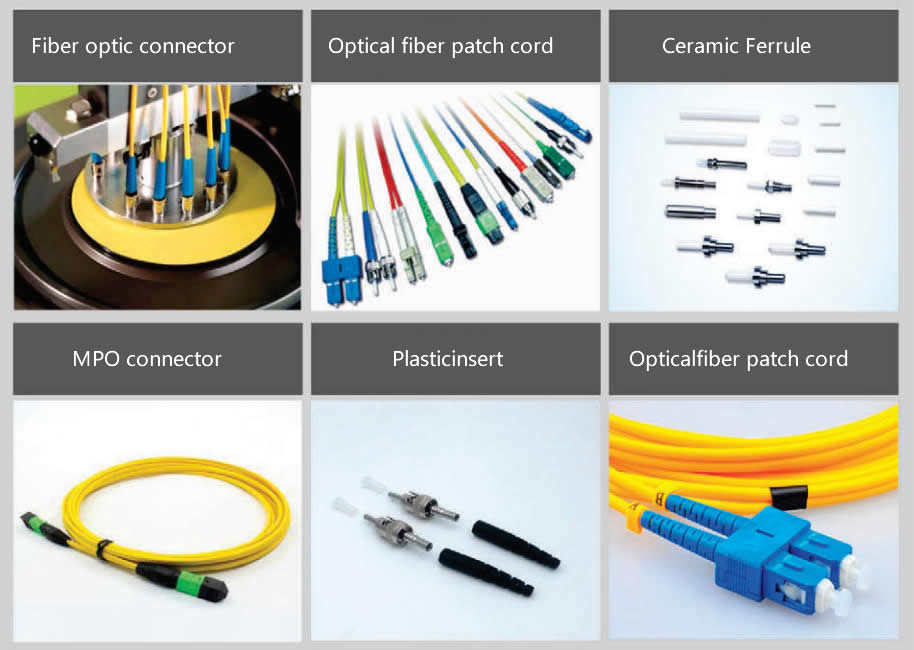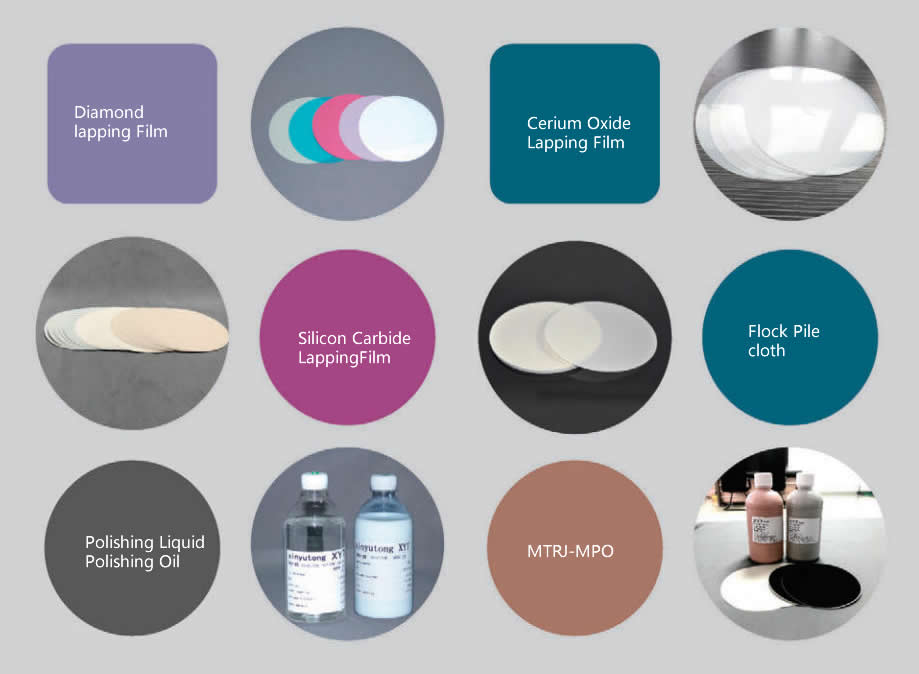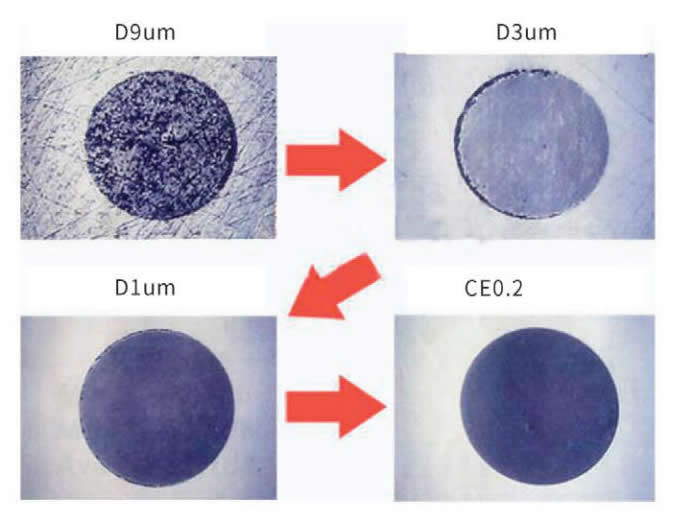Optical fiber communication
2025/4/15 16:06:58
Grinding and polishing solutions for the fiber optic communication industry
In the fiber optic communication industry, the grinding and polishing of fiber optic connectors is a key step in ensuring efficient transmission of optical signals. XinYuTong Optoelectronics Co., Ltd., with years of research and development experience and advanced production technology, focuses on providing high-precision and high stability grinding and polishing solutions for the fiber optic communication industry, helping customers improve the quality of fiber optic connectors and ensure low loss and high performance of fiber optic connections.

1. Product Overview
XinYuTong provides a range of professional grinding and polishing materials for the fiber optic communication industry, including but not limited to:
Diamond grinding and polishing film: suitable for high-precision processing of fiber optic connector end faces, capable of achieving extremely low optical loss and perfect surface smoothness.
Aluminum oxide grinding film: used for intermediate and advanced grinding and polishing, suitable for various fiber end face treatments, with excellent cost-effectiveness.
Silicon carbide grinding film: applied to fiber end faces with different process requirements, it has high efficiency and stability, and is suitable for grinding and polishing MPO MTP optical connectors.
Silicon oxide and cerium oxide grinding and polishing film: widely used in the final polishing treatment of optical fiber end faces, ensuring smooth and flat fiber end faces, reducing insertion and return losses, and improving signal transmission quality.
Fiber optic polishing solution: specifically designed for polishing fiber optic communication end faces, ensuring efficient cleaning and smooth surfaces.
Polishing equipment: Customized polishing equipment ensures the stability and efficiency of the grinding process.
2. One stop fiber optic communication grinding and polishing service
XinYuTong provides full process fiber optic communication grinding and polishing services, including:
End face grinding and polishing: Special grinding film and polishing solution are used to ensure that the fiber optic connector end face is flat, scratch free, and pollution-free, achieving low loss connection effect.
Polishing equipment support: Provide matching polishing equipment with efficient and precise functions to ensure consistent quality in mass production.
Customized solution: Based on the specific needs of customers, we provide customized grinding and polishing solutions to adapt to different types of fiber optic connectors (such as LC, SC, ST, MPO, MTP, FC, etc.) and different end face shapes.
3. Technical advantages
Fine coating technology: XinYuTong's grinding and polishing film adopts unique precision coating technology to ensure uniform distribution of grinding particles and provide precise and stable cutting force.
Highly automated production line: We have introduced leading fully automated production lines from both domestic and international sources to ensure the stability and consistency of each batch of products.
Dust free purification environment: Our production workshop meets strict Class 1000 purification standards to avoid external pollution and ensure the high cleanliness of our products.
Professional technical support: Our technical team provides one-on-one customized support to help customers optimize the fiber end face polishing process and solve practical application problems.
4. Quality Control and Certification
XinYuTong strictly follows industry standards, and all products have passed international certification to ensure that the quality of each batch of products meets the high standard requirements of the global fiber optic communication industry. We also provide detailed technical documents and quality reports to help customers achieve full traceability management.
5. Application industry
XinYuTong's fiber optic communication grinding and polishing solution is suitable for the following fields:
Data communication: providing stable and efficient fiber optic connections for high-speed data transmission.
Telecommunications industry: Ensure that the fiber optic connector end face of telecommunications equipment achieves optimal performance and guarantees signal transmission quality.
Fiber to the Home (FTTH): Meets the high-precision requirements for fiber optic connector end faces in the FTTH field.
Fiber optic network infrastructure: providing high-quality end face polishing solutions for fiber optic network construction.
6. summarize
XinYuTong provides a one-stop solution for the fiber optic communication industry through advanced grinding and polishing technology, professional customized services, and strict quality control. Our goal is to help customers achieve more efficient and reliable fiber optic connections, improve communication quality, and drive industry development through innovative products and technologies.
MPO/MTP fiber optic connector grinding and polishing process
The grinding and polishing process design of MPO/MTP fiber optic connectors is very precise, with the goal of ensuring smooth and accurate fiber end faces through a series of gradual grinding and polishing steps, achieving low insertion loss and low return loss requirements, and strictly controlling 3D data such as fiber height and core depression throughout the process to ensure optimal performance of the connector.
1. Rough Grinding - Silicon Carbide 15 µ m
Objective: To preliminarily remove the rough part of the fiber optic connector end face and adjust the shape of the fiber optic array.
Material: Silicon carbide (SiC) 15 µ m grinding film.
Operation:
Use a 15 µ m silicon carbide grinding film for wet grinding.
Control the grinding pressure to ensure the removal of most of the rough areas on the end face.
It is necessary to closely monitor the flatness of the end face, especially the height difference of the fiber array, to avoid excessive differences.
2. Medium Grinding - Silicon Carbide 3 µ m
Objective: To further refine the flatness of the end face, remove scratches after rough grinding, and begin controlling the height and indentation of the fiber array.
Material: Silicon carbide (SiC) 3 µ m grinding film.
Operation:
Use a 3 µ m silicon carbide grinding film for wet grinding.
At this stage, special attention should be paid to adjusting the fiber height and flatness to ensure that the fiber array maintains a uniform height.
During this process, avoid the formation of significant depressions and height differences.
3. Fine Grinding - Silicon Carbide 1 µ m (Control 3D Data)
Objective: To further refine the surface quality of the end face and accurately control the 3D data of fiber end face height and fiber core depression.
Material: Silicon carbide (SiC) 1 µ m grinding film.
Operation:
Use a 1 µ m silicon carbide grinding film for wet grinding.
Accurately adjust the flatness of the end face to ensure that the height of all fiber cores is consistent, avoiding obvious dents or uneven end faces.
This stage requires very meticulous operation to ensure precise control of the fiber core height and avoid excessive wear on the fiber end face.
4. Polishing - CE0.5B grinding solution+YMZ-10 black cloth
Goal: Ultimately polish the fiber optic connector end face to ensure excellent surface finish and further precise control of 3D data.
Material Science:
CE0.5B grinding solution: used for fine polishing, ensuring surface defects and optimizing the transmission performance of optical fibers.
YMZ-10 black cloth: high-precision polishing cloth that can provide uniform and smooth polishing effect.
Operation:
Apply CE0.5B abrasive solution onto YMZ-10 black cloth for low-speed wet polishing.
By meticulous polishing, ensure that the end face is smooth and free from any significant scratches or defects.
During the polishing process, pay attention to constantly checking the 3D data of the end face to ensure that the fiber end face meets the specified height and indentation standards.
summarize
The entire MPO/MTP fiber optic connector grinding and polishing process goes from rough grinding to fine polishing, removing uneven parts through multiple steps, and ultimately achieving a highly consistent fiber end face. In each step, the height difference of the fiber array and the indentation of the fiber core are strictly controlled to ensure that the end face meets strict technical requirements. Finally, CE0.5B abrasive solution and YMZ-10 black cloth were used for fine polishing to ensure the optimal smoothness of the fiber end face, thereby achieving low insertion loss, low backlash loss, and excellent transmission performance.
Fiber optic grinding and polishing process
Grinding and polishing of optical fibers is a crucial step in the manufacturing of optical fiber connectors, with the aim of ensuring that the fiber end face is flat and smooth to achieve excellent optical signal transmission performance. In the process of connecting optical fibers, the quality of the end face has a direct impact on the loss of optical signals (insertion loss and return loss), so fine grinding and polishing treatment is required. The following is the standard fiber optic grinding and polishing process:
1. Preliminary inspection
Objective: To confirm the preliminary condition of the fiber end face and detect the presence of cracks, stains, or other defects.
Method: Inspect the fiber end face through a microscope or specialized equipment to ensure that there are no obvious defects on the surface of the end face.
2. Rough grinding (first stage)
Goal: Remove most of the unevenness and excess material on the end face of the fiber optic connector.
Tools and materials: 30 µ m, 15 µ m coarse grinding film (such as diamond film, silicon carbide film, etc.).
Process:
Fix the fiber optic connector in the grinder fixture.
Use coarse grinding film for grinding to ensure that the end face reaches a relatively flat foundation.
Use water or grinding fluid for lubrication during the grinding process to avoid overheating.
Effect: Coarse grinding will remove a significant amount of material, but the surface of the end face is still not smooth enough.
3. Medium grinding (second stage)
Objective: To further remove the remaining unevenness and surface defects after rough grinding, and start smoothing the fiber end face.
Tools and materials: Grinding films with medium particle sizes of 9 µ m and 6 µ m (such as diamond and silicon carbide films).
Process:
Replace with a finer grained grinding film and continue using wet grinding.
Maintain the flatness of the fiber end face and avoid excessive grinding.
Effect: Medium grinding can effectively repair the end face, improve smoothness, and remove large scratches left in the initial stage.
4. Fine grinding (third stage)
Goal: Smooth and refine the end face, reducing small scratches and defects on the fiber end face.
Tools and materials: Grinding films with fine particle sizes of 3 µ m and 1 µ m (such as diamond film and aluminum oxide film).
Process:
Use a higher precision grinding film for slight and uniform grinding.
By precision grinding, ensure that the fiber end face achieves high smoothness and is ready to enter the polishing stage.
Effect: The surface of the end face is smooth, and the roughness on the fiber end face is greatly reduced.
5. Polishing (final stage) (such as cerium oxide film, silicon dioxide film)
Objective: To further improve the smoothness of the fiber end face, reduce surface defects, and ensure low insertion and return losses.
Tools and materials: 0.5-0.01 µ m polishing film (such as cerium oxide polishing film, silicon oxide polishing film).
Process:
Use a polishing film to perform final polishing on the fiber end face at low speed.
Continuously use water or polishing solution during the polishing process to avoid overheating and maintain optimal results.
Regularly inspect the surface quality of the fiber optic end face to ensure the required smoothness is achieved.
Effect: The surface of the end face is smooth and flawless, with almost no scratches, and the insertion and retraction losses are minimized, ensuring the optimal performance of the fiber optic connector.
6. Final inspection
Goal: Ensure that the fiber end face meets quality requirements and meets the standards for connection.
method:
Use a microscope or end face inspection instrument to check the surface quality of the fiber end face, including whether the end face is flat, how smooth it is, and whether there are any small cracks.
Detect the insertion loss and return loss values of the fiber end face to ensure compliance with industry standards.
Effect: Only when the fiber optic end face meets the quality standards can the next step of fiber optic connection installation be carried out.
7. Cleaning and packaging
Objective: To remove residual impurities such as grinding fluid and dust during the grinding and polishing process.
method:
Clean the fiber end face with a dust-free cloth or specialized cleaning tool.
Ensure that the end face is completely clean and avoid any small impurities affecting performance.
Pack the fiber optic connector and prepare for delivery or installation.
summarize
Fiber optic grinding and polishing is a key step in ensuring the quality of fiber optic end faces. The entire process, from rough grinding to polishing, requires strict control of the selection of grinding film, grinding time, moisture level, and pressure. Through precise operation, the optical performance of the fiber optic connector end face can be ensured, thereby achieving low insertion loss and high transmission efficiency.
Can solve the grinding needs of the following products

Optical fiber is an excellent vehicle for high-speed data transmission as long as light transmission is eficient .even across connector assemblies. This translates to a need to polish connector end facesto optimize performance. ourultra-precision lapping film can meet its requirements through theprocess of coarse grinding, fine grinding andpolishing.
Classic Recommended Products

Specification parameters
| Diamond/Silicon Carbide | ||||||
| Mesh | #600 | #1200 | #2000 | #3000 | #4000 | #8000 |
| um | 30 | 15 | 9 | 6 | 3 | 1 |
| type | 470mm,4110mm,4127mm(5inch),4203mm(9inch)114mm*114mm,152mm*152mm(6inch),228*228mm(9inch) | |||||
| Can be customized according to special requirements | ||||||
| Flock Pile cloth | |
| Round type | 470mm,4110mm,4127mm(5inch),4203mm |
| Sheet type | 114mm'114mm.152mm*152mm.228mm*228mm |
| Cerium Oxide/silicon oxide | |
| Mesh | 10000#--30000# |
| um | 0.5um--0.02um |
| type | 470mm.4110mm,4127mm(5inch),4203mm(8inch)114mm*114mm,152mm*152mm(6inch),228*228mm(9inch) |
| Can be customized according to special requirements | |
| PolishingLiquid | ||
| Model | Material | Specification |
| PGY-30 | Silicon Oxide | 500ML/Bottle |
| PGY-80 | Silicon Oxide | 500ML/Bottle |
| MT-CE0.5 | Cerium Oxide | 500ML/Bottle |
| MT-AO1 | Aluminum Oxide | 500ML/Bottle |
| Polishing Oil | |
| Model | Specification |
| PGY-45 | 500ML/Bottle |
Fiber jumper grinding process

Optical fiber after grinding effect

- 上一页: 没有了
- 下一页: micro-motor
 English
English 中文
中文
